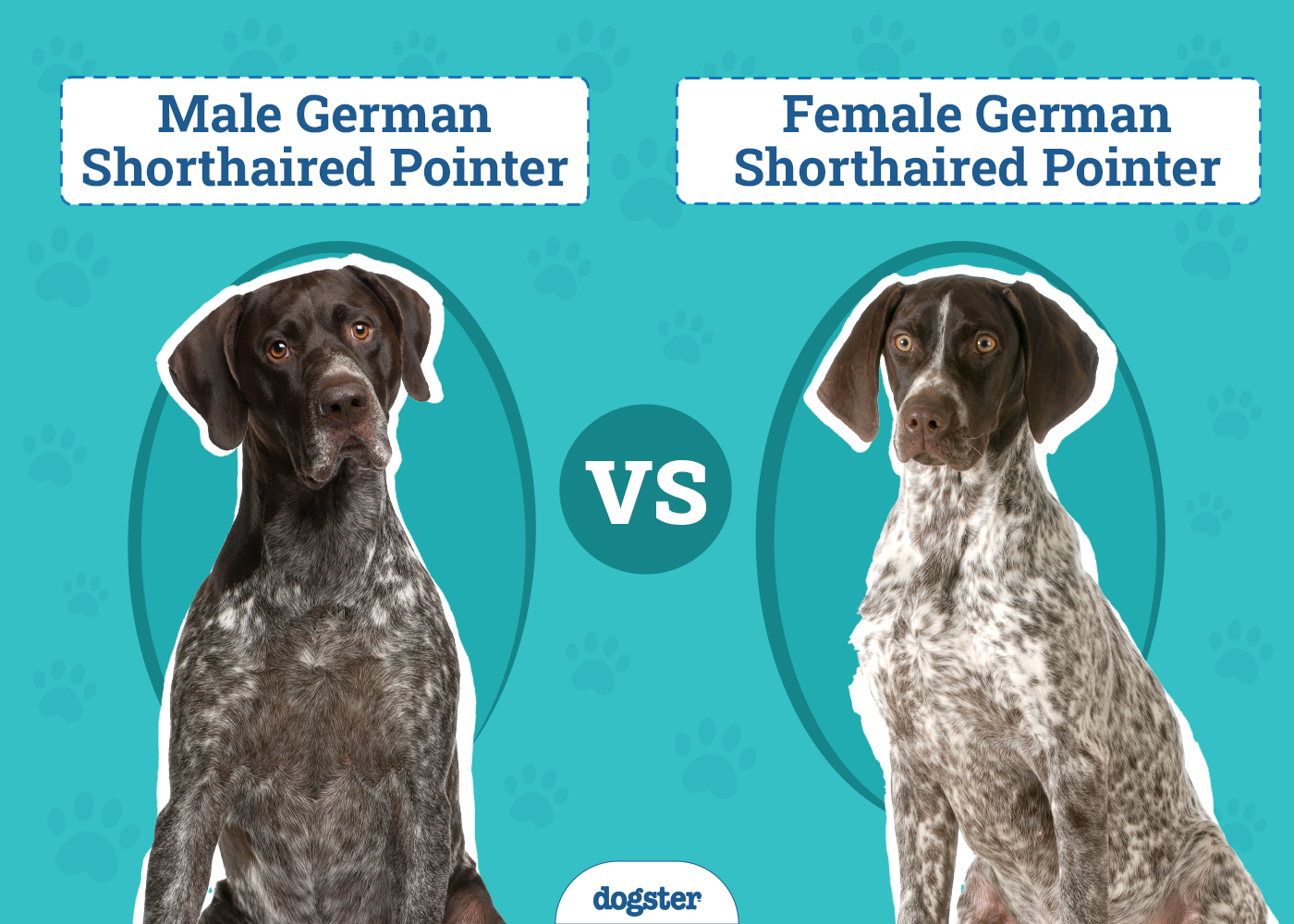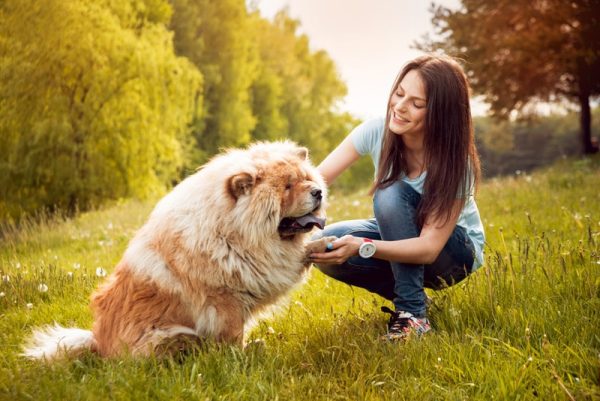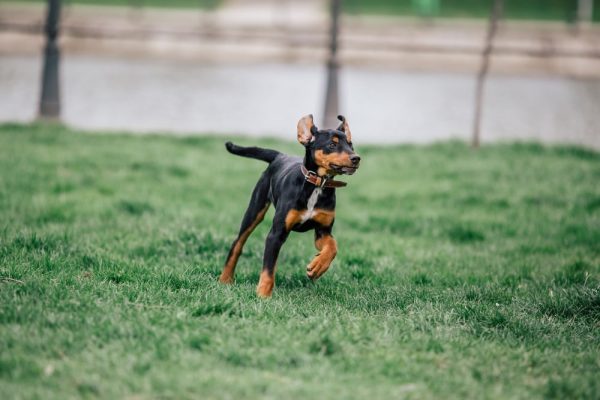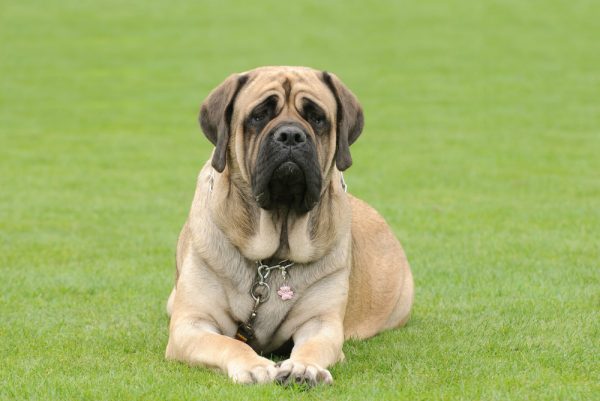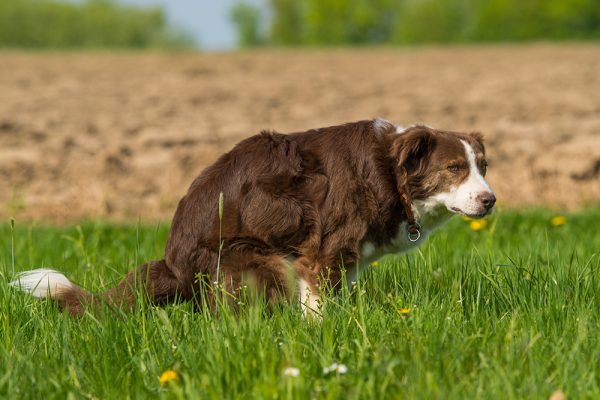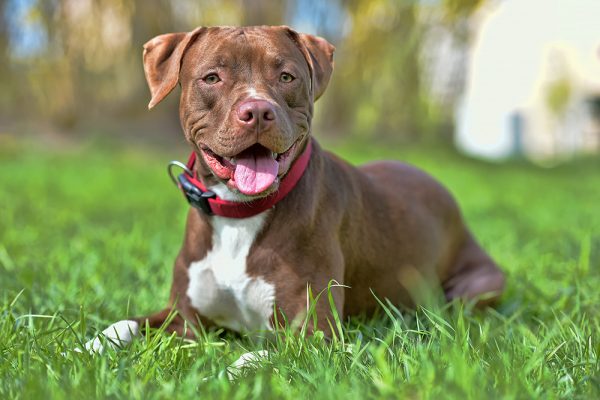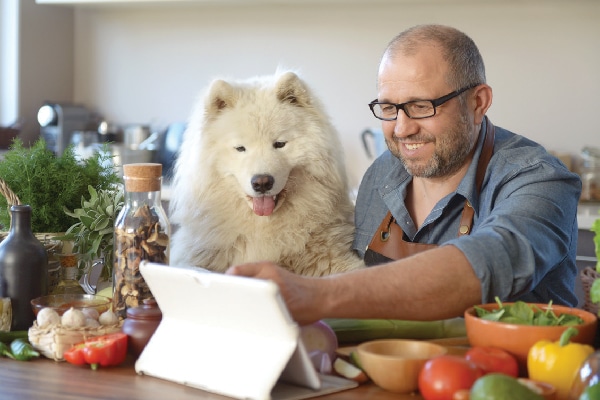In this article
View 3 More +As a low-maintenance dog that produces great offspring, the German Shorthaired Pointer is a popular breed of canine. Before you get a new puppy, it’s important to decide on whether to get a male or female. It’s likely that one or the other will be a better fit, so you’ll have to choose which one suits your personal style. Worry not; this article will give you all the information you need to determine whether a male or female German Shorthaired Pointer is better suited to you.

Visual Differences
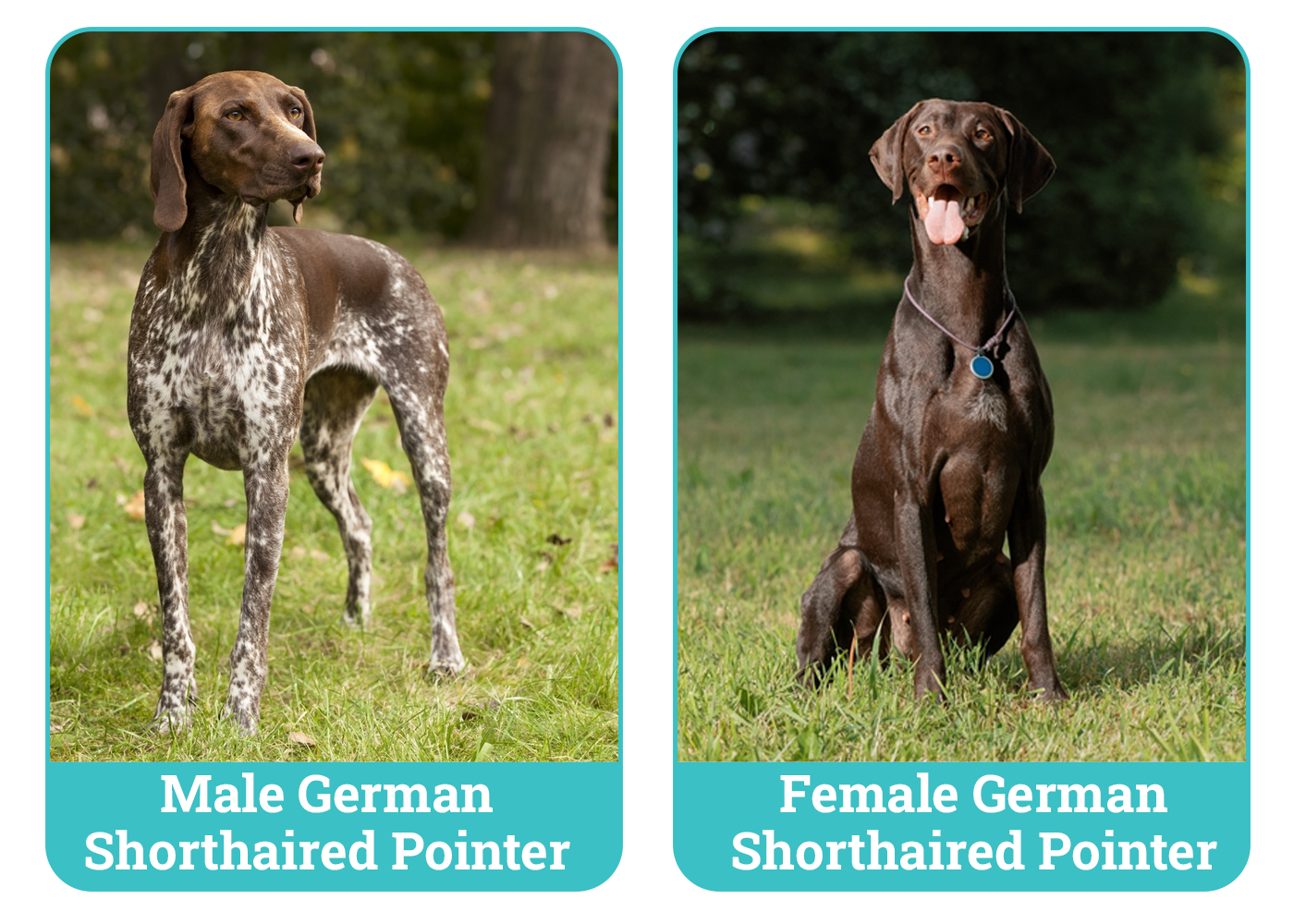
At a Glance
- Average height (adult): 21½–24½ inches
- Average weight (adult): 55–80 pounds
- Average height (adult): 21–26 inches
- Average weight (adult): 55–80 pounds

German Shorthaired Pointer 101
This dog breed was first bred in Germany during the late 1800s to be used as an all-around hunting dog that also makes a good companion. It’s safe to say they accomplished their goal as the German Shorthaired Pointer is one of the most accomplished hunting and sporting breeds.
- German Shorthaired Pointers are well-rounded hunting dogs. They can hunt, track, and retrieve a wide variety of game animals. They instinctively act as multi-taskers.
- These dogs have an extremely high prey drive. The instincts of a German Shorthaired Pointer are highly tuned to track down and catch any small prey, including birds, rabbits, or squirrels. For this reason, they should be kept in well-secured, fenced areas and exercised off-leash with an acute awareness of the surroundings.
- They are high-energy dogs. If you want a dog that is satisfied with a short walk after you get home from work, this isn’t your breed. These dogs require serious amounts of exercise to burn off their energy, and at least two 30-minute daily sessions of high-intensity exercise are recommended.
- German Shorthaired Pointers will require training as puppies to avoid directing their energy and prey drive into the wrong activities. Too much energy can lead to destructiveness if it is not channeled properly. Luckily, this dog breed is eager to please and learns quickly, making obedience training enjoyable for dogs and their owners alike.
- These dogs make great family or companion pets, but caution should be taken with small children. Pointers are affectionate, loving dogs that love children; however, their size and energy level can cause them to easily pounce on or knock over babies and toddlers while they are trying to play.

Male German Shorthaired Pointer Overview

Personality / Character
Male German Shorthaired Pointers are affectionate, friendly, and eager to please their owners. They are often called “perpetual puppies” because instead of slowing down, they become more energetic and playful as they get older. They also tend to be clingier than their female counterparts.
As with all breeds, males can have a tendency to be more aggressive than females, especially if they are left intact. German Shorthaired Pointers, however, are not a breed prone to aggression. They can be somewhat protective of their family or territory.
Training
This breed, in general, is relatively easy to train. Obedience training is especially important at an early age. The mature size and abundant energy of a German Shorthaired Pointer mean that they are prone to destruction if they don’t know how to behave. They will also be difficult to manage as adults if they don’t learn to follow basic commands as youngsters.
There’s no limit to the tasks you can train this dog to do. Males are harder to teach off-leash walking to than females, as they follow their nose on outdoor adventures and “tune out” their owner’s cries for them to return.
Male German Shorthaired Pointers are more food-motivated than females, which can lead to easier training. Their attention span is shorter, so they will need shorter training sessions. Training males also requires more maintenance than with females.
Males of this breed socialize well and are more likely than females to bond with all members of the family, rather than just their handler.
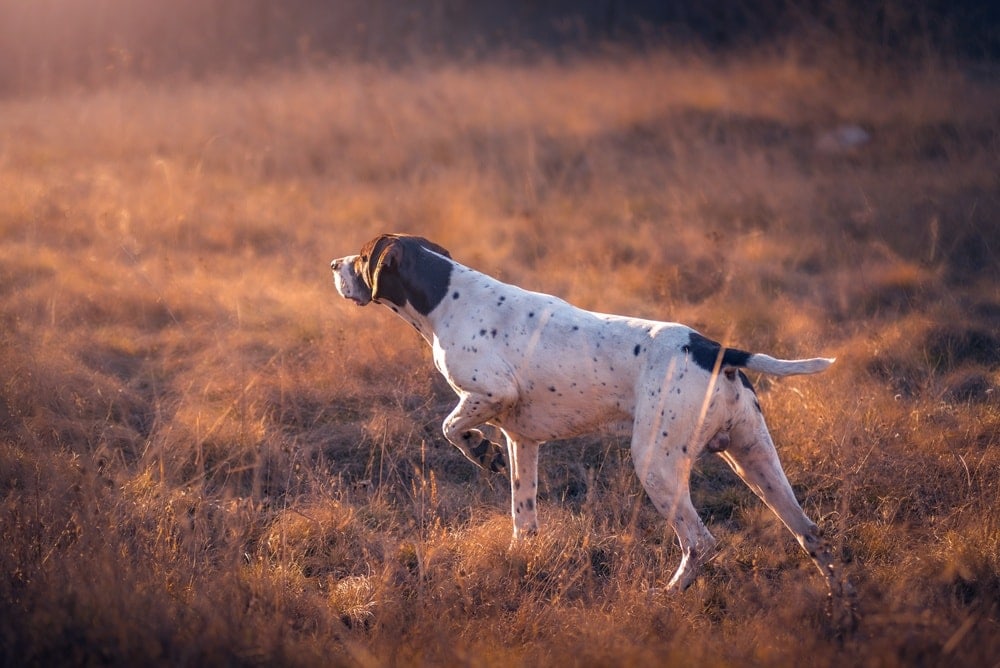
Health & Care
Males reach physical maturity faster than females and reach mental maturity slightly slower.
Males are larger than females, maturing somewhere between 55 and 70 pounds. They have strong, muscular bodies with heavy jowls.
As males have a tendency to engage in more strenuous exercise at a young age, it’s important to take precautions to protect their bones and joints. Due to their large size, jumping and lunging can make these dogs vulnerable to joint diseases and fractures.
Overall, the life expectancy of a male Pointer is shorter than a female’s. They are also more likely to suffer a catastrophic, life-endangering cardiac event.
Breeding
Males are less expensive than females. Male puppies can cost as little as $900.
- More affectionate
- Eager to please
- Easier to socialize
- Bond with more than one person
- Require more maintenance
- Harder to train due to being easily distracted and shorter attention span
- Can be clingier and less independent

Female German Shorthaired Pointer Overview
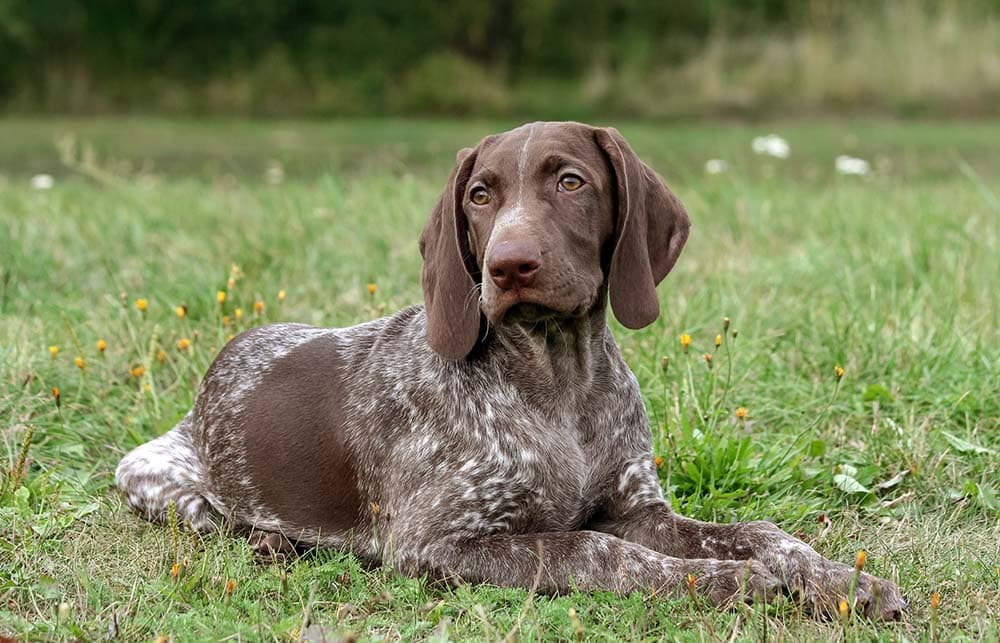
Personality / Character
Female German Shorthaired Pointers are equally as friendly as males but slightly less eager to please. They’re less playful, less attention-seeking, and less aggressive. Females of this breed are still very active, but they are more independent and value their alone time. They are much less likely to be clingy and glued to your side.
Females have a greater tendency to bond with a single person rather than multiple family members. They can be warier of strangers and appear standoffish at times. They are also more cautious about children. While males are inherently loyal, females make you earn their loyalty and respect.
For the most part, female Pointers are cleaner and more likely to get along with other animals than males.
Training
Females are easier to train than males, although they are less food motivated. They are more focused with longer attention spans and don’t require ongoing training maintenance.
If you want your German Shorthaired Pointer to be off-leash trained, females will do this a lot easier than males. Since they are more focused on their owners and not as easily distracted, they do well off-leash and recall easily.
Health & Care
Female German Shorthaired Pointers are slightly smaller than males at an average weight of 45 to 60 pounds. They are lighter and thinner, have skinnier necks, and have no visible jowls.
Joint and bone issues are less prevalent in female Pointers as they have a lower body mass. Their life span is slightly longer, and they are less prone to cardiac and breathing issues and injuries.
There is one genetic trait called PRA that female German Shorthaired Pointers can inherit. This is an eye disease that will lead to blindness. To avoid this issue, make sure to acquire your puppy from a reputable breeder who can provide genetic testing.
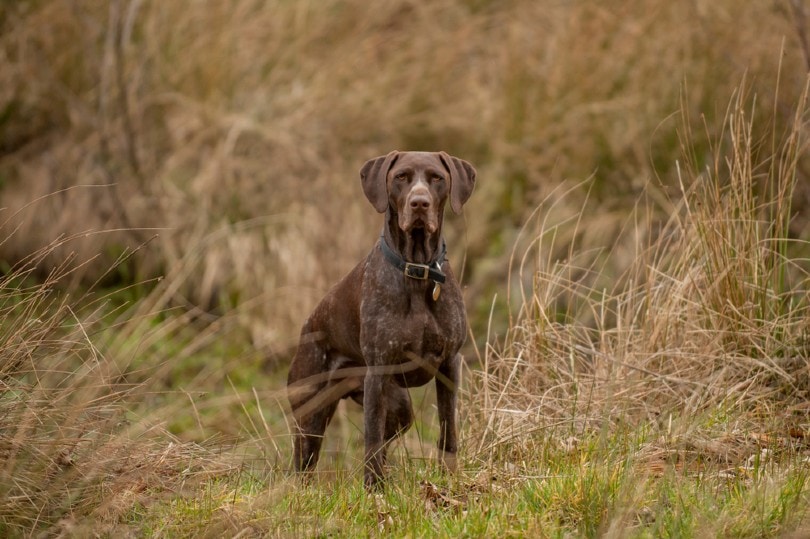
Breeding
Female dogs are usually more expensive than males. The average price of a female German Shorthaired Pointer puppy ranges between $1,400 and $5,500.
As with all female dogs, if they are not spayed, they will cycle regularly and go into heat. It is strongly recommended to spay female dogs if you do not intend to use them for breeding.
- Independent
- Easier to train
- Better off-leash
- Cleaner
- Get along better with other animals
- Not as affectionate
- Require you to earn their trust
- Bond with a single person

Do Males or Females Hunt Better?
There is no discernible difference between male and female German Shorthaired Pointers with regard to their hunting abilities. Both sexes have strong hunting instincts and make fantastic hunting dogs. The differences relate to their trainability and temperament, which is a personal preference.
If they are trained well and properly socialized from a young age, sex will not play a role in this dog’s skill as a hunting companion.

Which Sex Is Right for You?
Which sex of German Shorthaired Pointer is right for you depends on your personal preference. If your focus is on training, and you want an independent dog that is not overly affectionate, you are better suited to a female German Shorthaired Pointer. If you want a dog that’s more affectionate and friendly but still active and sport-minded, you should look for a male.
Related Reads:
Featured Image: Burry van den Brink, Shutterstock (top); Pixabay (bottom)
